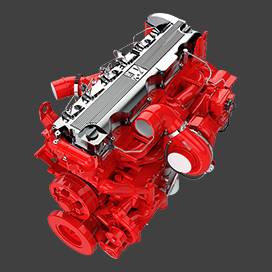Nov . 01, 2024 18:18 Back to list
Steps to Safely Remove a Brake Drum for Vehicle Maintenance
Removing a Brake Drum A Step-by-Step Guide
Removing a brake drum is an essential skill for any DIY enthusiast or automotive technician. Brake drums play a crucial role in the braking system of many vehicles, particularly those with rear drum brakes. Over time, these components can wear out, become warped, or corrode, necessitating replacement. Here's a detailed guide to help you safely and effectively remove a brake drum.
Tools and Safety Precautions
Before beginning the removal process, ensure you have the necessary tools. You will typically need
- A lug wrench or impact wrench - Drum brake adjuster tool or a flathead screwdriver - A rubber mallet or hammer - A socket set - Safety glasses and gloves
Safety is paramount when working on a vehicle. Always make sure the car is on a flat surface, engage the parking brake, and use wheel chocks to prevent any movement. Wear safety glasses to protect your eyes from dust and debris, and gloves to protect your hands.
Step 1 Loosen the Lug Nuts
Start by slightly loosening the lug nuts on the rear wheels while the vehicle is still on the ground. Turn the lug nut counterclockwise using a lug wrench or impact wrench. Do not remove the nuts completely; just loosen them enough to make the next steps easier.
Step 2 Raise the Vehicle
Use a hydraulic jack to lift the rear of the vehicle. Once elevated, secure the car with jack stands to prevent it from falling. Always double-check that the stands are stable before proceeding.
Step 3 Remove the Wheels
removing a brake drum

With the vehicle securely lifted, remove the lug nuts completely and take off the wheel. This will expose the brake drum, allowing you to work more easily.
Step 4 Inspect the Brake Assembly
Before proceeding to remove the drum, take a moment to inspect the brake assembly. Look for any signs of wear or damage, such as leaking brake fluid or worn-out brake shoes. If the shoes are worn, they will need to be replaced as well.
Step 5 Adjust the Brake Shoes
If the drum is stuck, it may be because the brake shoes are too tight against the inside of the drum. Use a brake adjuster tool or a flathead screwdriver to adjust the star wheel mechanism on the backing plate. Turn it in the direction specified (typically clockwise) to retract the shoes slightly. This should free the drum for removal.
Step 6 Remove the Brake Drum
Now that the shoes are adjusted, you can attempt to remove the brake drum. If it does not come off easily, use a rubber mallet to gently tap around the edges of the drum. This vibration can help break any corrosion that may be holding the drum in place. Be careful not to hit too hard, as this might damage the component.
Step 7 Check for Damage and Clean
Once removed, inspect the drum for any signs of wear, cracks, or other damage. If the surface appears rough or uneven, it may need to be resurfaced or replaced. Clean the inside of the drum and the brake components to ensure optimal performance when reassembling.
Conclusion
Removing a brake drum is not only a valuable skill but also a crucial part of vehicle maintenance. By following these steps and taking proper safety precautions, you can effectively handle this task and ensure your vehicle's braking system functions safely and efficiently. Should you encounter any difficulties or are unsure about any steps, consulting a professional mechanic is always a good idea.
-
Scania Brake Drums: OEM Quality for Optimal Safety & Durability
NewsAug.16,2025
-
R.V.I: Advanced Remote Visual Inspection for Precision
NewsAug.15,2025
-
Discover HYUNDA: Innovative Vehicles, Equipment & Solutions
NewsAug.14,2025
-
R.V.I: Unlock Advanced Insights & Real-time Performance
NewsAug.13,2025
-
Kamaz Brake Drum: Durable & Reliable for Heavy Duty Trucks
NewsAug.12,2025
-
Heavy Duty Iveco Brake Drum - Premium Quality & Safety
NewsAug.11,2025
